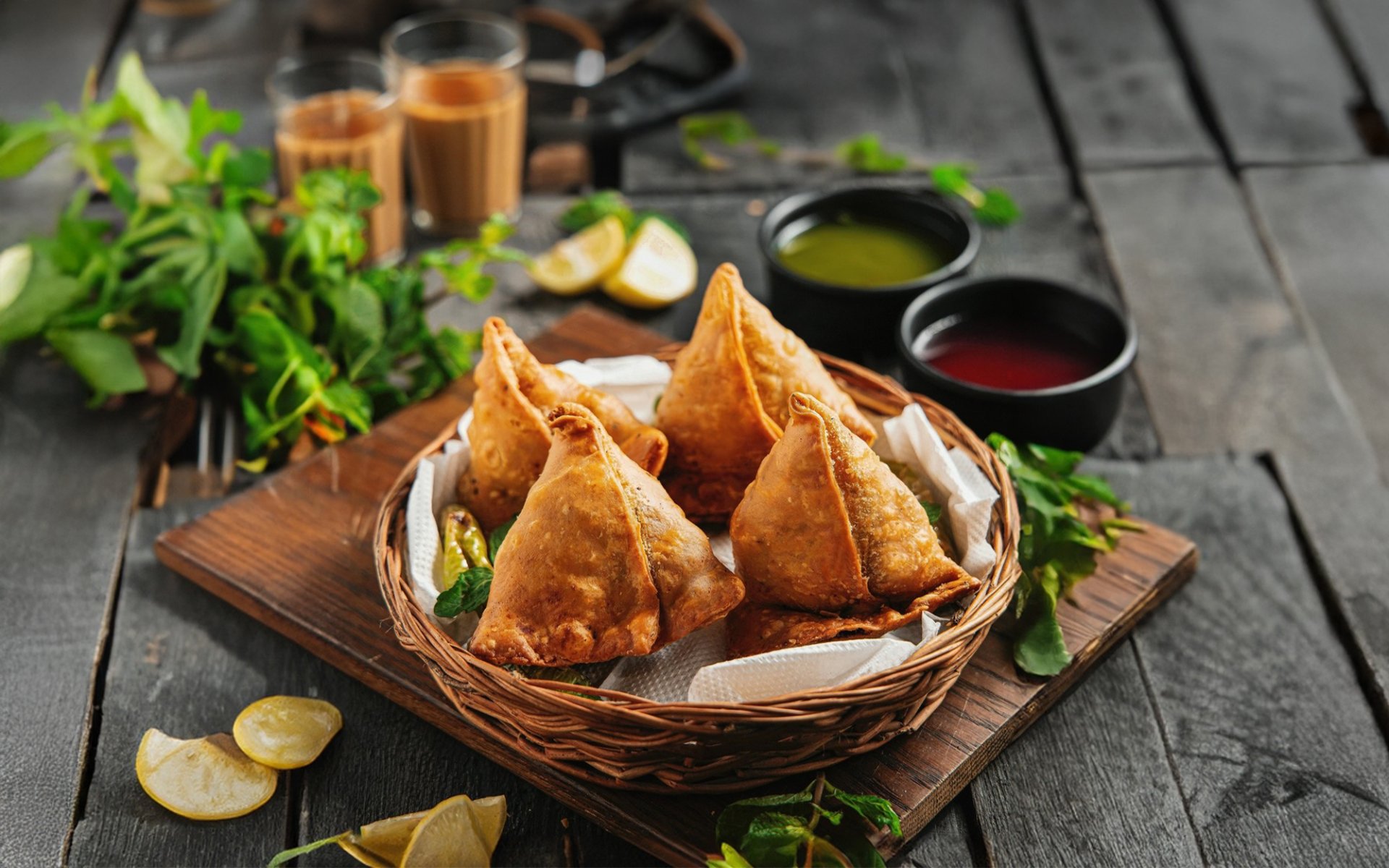Samosa

Samosa is a popular snack originating from South Asia. Generally, it's made from a thin, crispy dough wrapper shaped into a triangle, cone, or crescent, filled with potatoes, onions, peas, meat, and various spices. Today, Rimping Supermarket invites you to delve into the history of Samosa, a beloved street food from the South Asian region.
Origins in Ancient Persia: The Sanbosag of Travelers (11th Century)
The origin of Samosa dates back to the ancient Persian Empire, where it was known as Sanbosag. Historical records from the 11th century describe early versions of Samosa as small, triangular pastries filled with minced meat, nuts, and dried fruits. Their preparation required meticulous attention to detail to achieve the perfect taste and texture.
In ancient Persia, Samosa gained popularity among travelers and merchants because it was a nutritious food with a long shelf life and was easy to carry. Samosas at that time were very small, making them convenient to pack in bags and eat on the go.
Journey to the Indian Subcontinent and Adaptation (13th - 16th Century)
During the 13th century, Samosa was introduced to the Indian subcontinent with the arrival of Persian merchants and invaders. During this period of cultural exchange, Samosa quickly gained popularity.
In India, Samosa was adapted to suit local tastes, evolving into the recipe we know today. It incorporated Indian ingredients and spices. This version typically consists of potatoes, peas, and meat, wrapped in a crispy pastry and shaped into a triangle.
During the Mughal Empire in the 16th century, Samosa became a popular snack in royal courts and among the aristocracy. They were often consumed at social gatherings and festivals.
Regional Variations and Global Spread
Over time, Samosa's popularity spread throughout India, leading to regional variations:
- North India: Samosas are often served with tamarind chutney or mint chutney.
Western India: Samosas are frequently filled with coconut and dried fruits, shaped like small turnovers called Ghughra. - South India: Samosas were adapted by adding new ingredients such as curry leaves and mustard seeds.
In Kenya and Tanzania, Samosas are often filled with seasoned beef or lamb and are called Sambusa.
In Afghanistan, Samosas are often referred to as Bolani and are filled with various vegetarian ingredients.
Today, Samosa has become a popular street food enjoyed in many countries worldwide, with countless variations and recipes.


